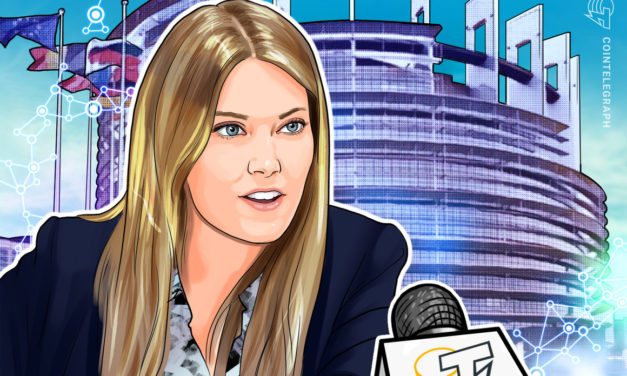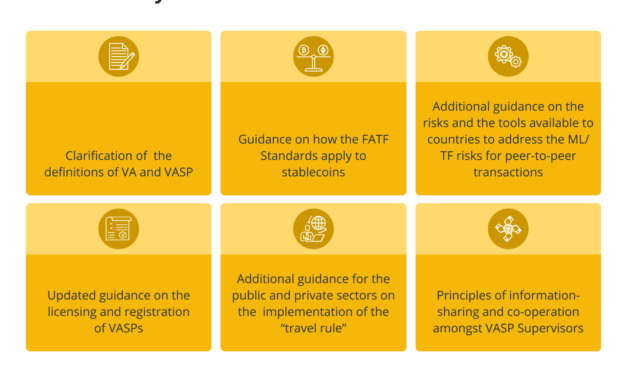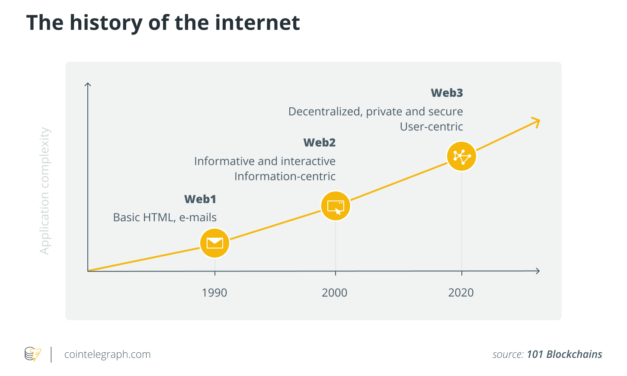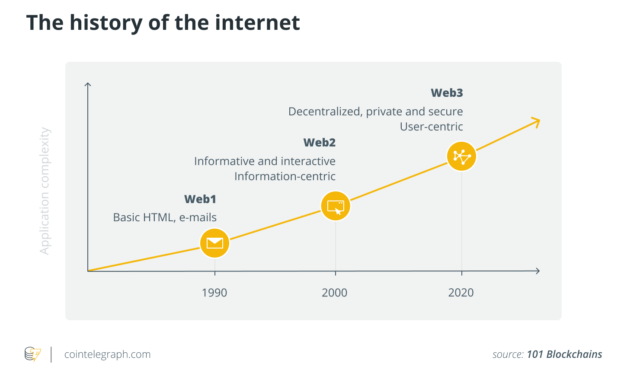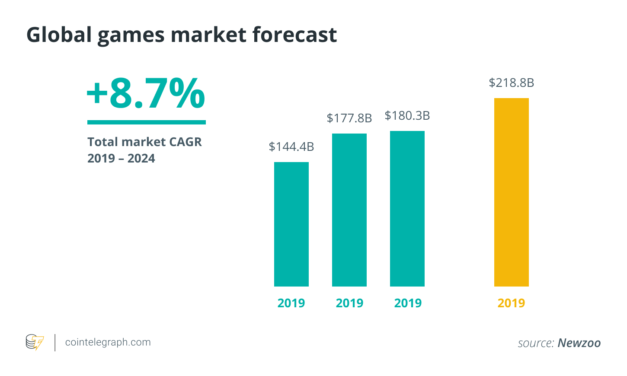Talking with Eva Kaili, VP of the European Parliament, on MiCA regulation
In an article I wrote for Cointelegraph, I commented on how the European Union has moved forward to regulate the crypto-asset market through Markets in Crypto-Assets (MiCA) and Transfer of Funds Regulation (ToFR). With this subject as a background, I had the privilege of interviewing one of the people who knows the most about regulating new technologies: Eva Kaili, vice president of the European Parliament. She has been working hard on promoting innovation as a driving force for the establishment of the European Digital Single Market. Check out the interview below, which covered key points about MiCA, some proposed legislative provisions proving to be more controversial than others, such as decentralized finance (DeFi) remaining out of scope, rules administered through self-executing smart contracts (Lex Cryptographia), decentralized autonomous organizations (DAOs) and more.1 — Your work in promoting innovation as a driving force for the establishment of the European Digital Single Market has been intense. You have been a rapporteur for several bills in the areas of blockchain technology, online platforms, Big Data, fintech, AI and cybersecurity. What are the main challenges legislators face when introducing bills involving new technologies? Technology develops rapidly, and innovative solutions need some space to be tested and developed. Then, policymakers need some time to understand how these technologies have been shaped, consult with stakeholders, and measure the expected impact on traditional markets. So, the optimal way forward is not to immediately respond to any technological development with a legislative initiative but rather to provide time to the technology to develop and to the policymakers to educate themselves, comprehend the benefits and challenges of innovative technologies, digest how they are supposed to affect the current market architecture and, then, suggest a balanced, tech-neutral and forward-looking legislative framework. To this end, in Europe, we adopt a “wait and see” approach, which leads us to safely proceed by answering three fundamental questions: (1) how early should the technological development be regulated? (2) how much detail should the proposed regulation include? and (3) how broad should the scope be? In this context, new challenges may arise, amongst which to decide whether to use old rules to new instruments or to create new rules to new instruments. The former is not always viable and may have unintended consequences to legal certainty as amendments or modifications may capture a complex legislative framework. On the other hand, the latter needs time, consultation with stakeholders, interinstitutional scrutiny and more. In any case, it should be duly considered that the answers to these questions determine the growth of the market, the time to reach this growth and the impact of the said regulation to other markets, as there is also a geopolitical dimension to be considered while regulating new technologies. 2 — In 2020, the European Commission launched a Digital Financial Package that has as its main objective to facilitate the competitiveness and innovation of the financial sector in the European Union (EU), establish Europe as a global standard setter, and provide consumer protection for digital finance and modern payments. What does a regulatory framework need to consider to be a competitive advantage in a given jurisdiction? As I mentioned, today, it is more critical than ever to consider the global geopolitical dimension and effect of a prospective regulatory regime regarding new technologies. You see, in the new global digital economy, the concentration of technological capacity increases the competition between jurisdictions. For example, technological inter-dependences and dependences between the dominant market players, and the geographic regions they control, are evident in Asia, Europe and America. In this context, digital products and services translate to power, have strong geo-economic implications, and facilitate “digital imperialism” or “techno-nationalism.” Thus, any prospective regulatory framework should be seen as a source of national or jurisdictional competitive advantage, generating robust, innovation-friendly, risk-immune markets. It may attract human capital to sustain innovation and financial capital to fund innovation over time. These principles were the main driving forces for the DLT Pilot Regime and the Markets in Crypto-Assets Regulations, as we succeeded two milestones: creating a first-ever pan- European sandbox to test DLT in traditional financial market infrastructures and the first concrete set of rules regarding crypto, spanning from crypto assets, including stablecoins, to issuers, market manipulation and beyond, setting the standards of what a crypto market regulatory approach should look like and creating a competitive advantage for the European single market. 3 — Blockchain’s initial reputation as an “enabling” technology for fraud, illicit payments from drug dealers and terrorists on the “dark web,” as well as “environmentally irresponsible,” has created many obstacles to any regulatory treatment of the technology. In 2018, when you participated on a panel on regulation at Blockchain Week in New York, only small jurisdictions such as Malta and Cyprus were experimenting with the technology and had legislative proposals to regulate the industry. At that time, ignorance of the technology led to many regulators claiming time and again that blockchain was just a trend. What made you realize that blockchain was much more than just the enabling technology for crypto-assets and crowdfunding tokens?Early on, I realized that blockchain was the infrastructure for a wide range of applications that would transform market structures, business and operational models, and it would have strong macroeconomic effects. Today, while the technology is still evolving, it has already been perceived to be the backbone and the infrastructure of any IoT [Internet of Things] environment leveraging human-to-machine and machine-to-machine interactions. Its impact on the real economy is expected to be decisive, although it is not yet easy to predict in which way and under which conditions. Nonetheless, the rapid blockchain development has already forced both businesses and government leaders to reflect on (1) how the new marketplaces will look like in the coming years, (2) what would be the appropriate organizational setting in the New Economy, and (3) what kind of market structures should be formed in order, not only to survive the economic competition and stay technologically relevant but also to generate and sustain rates of inclusive growth proportional to the expectations of society. Critical to this end are both the European Blockchain Services Infrastructure projects and the European Blockchain Observatory and Forum initiative, which aim to give the EU a considerable first-mover advantage in the new digital economy by facilitating technological advancements and testing the blockchain convergence with other exponential technologies. 4 — On June 30, the European Union reached a tentative agreement on how to regulate the crypto industry in the bloc, giving the green light to MiCA, its main legislative proposal to regulate the crypto asset market. First introduced in 2020, MiCA has gone through several iterations, with some proposed legislative provisions proving more controversial than others, such as decentralized finance (DeFi) remaining out of scope. DeFi platforms, such as decentralized exchanges, by their nature, appear to be contrary to the fundamental principles of regulation. Is it possible to regulate DeFi at its current stage of development? Indeed, the preliminary critique received from market participants, when the Markets in Crypto-Assets Regulation was presented back in September 2020, was that it excluded decentralized finance, which aims to decentralize financial services, making them independent from centralized financial institutions. However, as DeFi, ideally, runs with smart contracts in decentralized autonomous organizational architectures leveraging decentralized applications (DApps) with no entity to be identified, it could not be appropriately accommodated in the Markets in Crypto-Assets Regulation, which is explicitly addressing blockchain financial services providers that are, or need to be, legally established entities, supervised on whether they comply with specific requirements as regards to risk management, investor protection and market integrity, thus liable in case of failure, within a clear and transparent legal context. DeFi, by design, lacks the characteristics of an “entity” at least in the way we are used to. Hence, in this decentralized environment, we need to rethink our approach as regards to what would constitute “the entity” that would bear the liability in case of misconduct. Could it be replaced with a network of pseudonymous actors? Why not? However, pseudonymity is not compatible with our legal and regulatory tradition. At least not so far. No matter what is the architecture, the design, the process and the characteristics of a product or service, everything and always should end up to a responsible person(or persons). I would say that the DeFi case reflects exactly the problem of lacking who to blame. So, decentralization seems much more challenging for policymakers.5 — The European Union’s movement to regulate the crypto and blockchain industry started long before MiCA. On Oct. 3, 2018, the European Parliament voted, with an unprecedented majority and the support of all European parties, its “Blockchain Resolution.” How important is this resolution from a political economy perspective? How was the passing of the Blockchain Resolution instrumental in leading the European Union to take a regulatory lead? The European Parliament’s Blockchain Resolution of 2018 reflected the views of how to approach, from a regulatory point of view, a technology which was (and is) still evolving. The main argument for the resolution was that blockchain is not just the enabling technology for cryptocurrencies and crowdfunding tokens but the infrastructure for a wide range of applications necessary for Europe to stay competitive in the New Economy. Based on this, the Committee of Industry (ITRE) of the European Parliament authorized the drafting of the resolution: “Distributed Ledger Technologies and Blockchain: Building Trust With Disintermediation.” And this was my part of political entrepreneurship that I felt I had to take on to unlock the demand for a regulation and trigger EU institutions to think of the prospect of regulating the uses of blockchain technology. So, when drafting the resolution, I was not merely aiming to create a basis of legal certainty but rather institutional certainty that would allow blockchain to flourish within the EU single market, facilitate the creation of blockchain marketplaces, make Europe the best place in the world for blockchain businesses, and make the EU legislation a role model for other jurisdictions. Indeed, the Blockchain Resolution triggered the European Commission to draft the DLT Pilot Regime and the Markets in Crypto-Assets proposals, reflecting the principles of technological neutrality and the associated concept of business model neutrality necessary to facilitate the uptake of a digital technology of critical strategic importance. 6 — There are different blockchain architectures, especially those based on permissionless blockchains, which provide not only disintermediation but also decentralized governance structures with automation properties. As these structures advance, do you believe that in the future, there will be room for “Lex Cryptographia” — rules administered through self-executing smart contracts and decentralized autonomous organizations (DAOs)? And if so, what principles or guidelines should regulators take into consideration in this case? The continuing technological advancements and the prospect of a decentralized global economy operating in real-time utilizing quantum technology, artificial intelligence and machine learning along with blockchain technology will soon lead to the development of “Lex Cryptographia,” as code-based systems will seem to be the most appropriate way forward to enact law effectively in this new environment. However, this would not be an easy task for politicians, policymakers and society at large. Critical questions would need to be answered at the code level while navigating the “Lex Cryptographia” space: What would such a system be programmed to do? What kinds of information will it receive and verify and how? How frequently? How will those who maintain the network be rewarded for their efforts? Who will guarantee that the system would operate as planned when the regulation will be baked into the architecture of such a system? The prospect of “Lex Cryptographia” requires us to widen our understanding of what would actually constitute a “good regulation” in this case. And this is a challenge for every jurisdiction in the world. I would say that a way forward would be to leverage, once more, on “sandboxing” — as we did with the DLT Pilot Regime — and create a solid yet agile space that will allow both innovators and regulators to share knowledge and gain the necessary understanding that will inform the future legal framework. This article does not contain investment advice or recommendations. Every investment and trading move involves risk, and readers should conduct their own research when making a decision.The views, thoughts and opinions expressed here are the authors’ alone and do not necessarily reflect or represent the views and opinions of Cointelegraph.Tatiana Revoredo is a founding member of the Oxford Blockchain Foundation and is a strategist in blockchain at Saïd Business School at the University of Oxford. Additionally, she is an expert in blockchain business applications at the Massachusetts Institute of Technology and is the chief strategy officer of The Global Strategy. Tatiana has been invited by the European Parliament to the Intercontinental Blockchain Conference and was invited by the Brazilian parliament to the public hearing on Bill 2303/2015. She is the author of two books: Blockchain: Tudo O Que Você Precisa Saber and Cryptocurrencies in the International Scenario: What Is the Position of Central Banks, Governments and Authorities About Cryptocurrencies?
Čítaj viac
